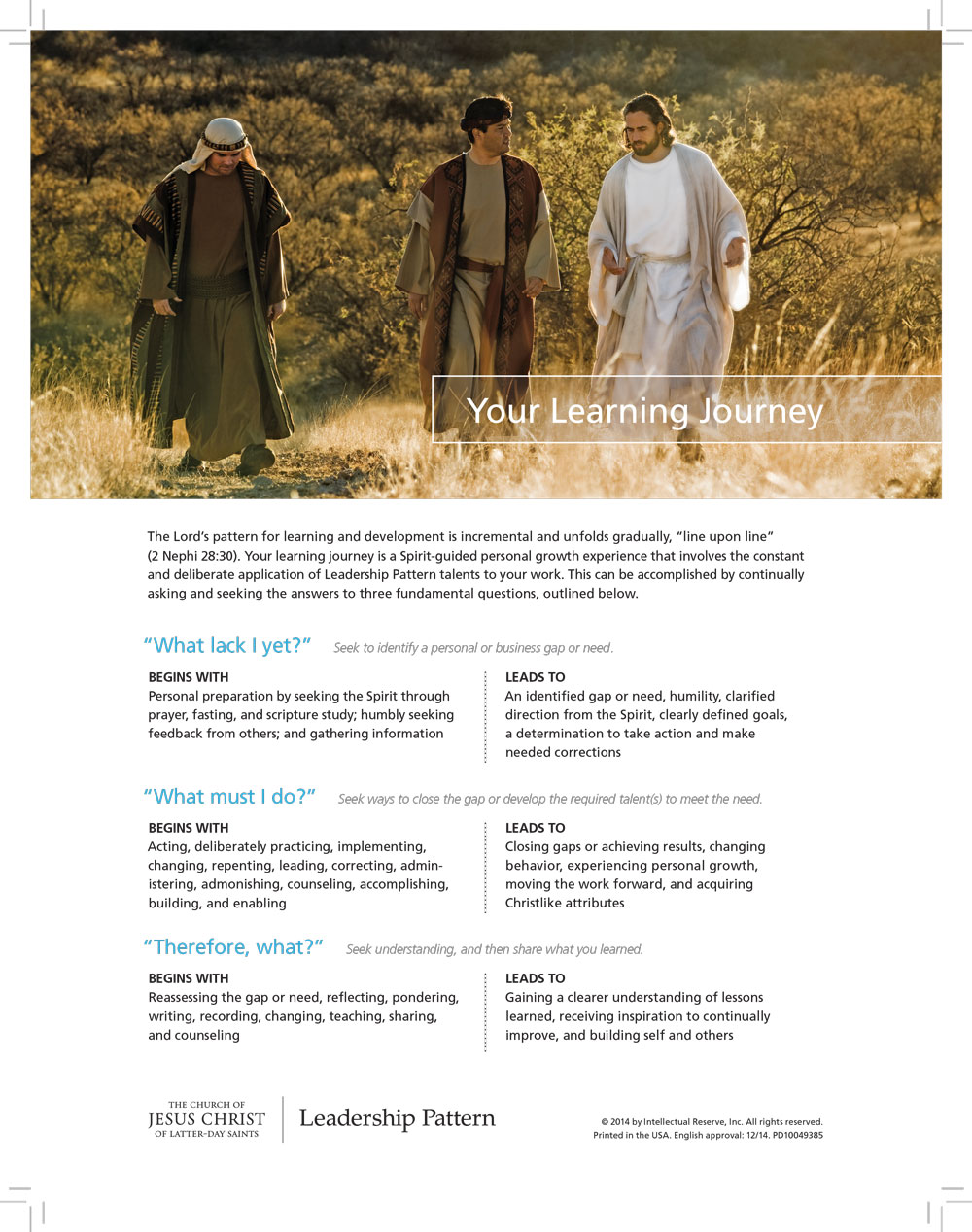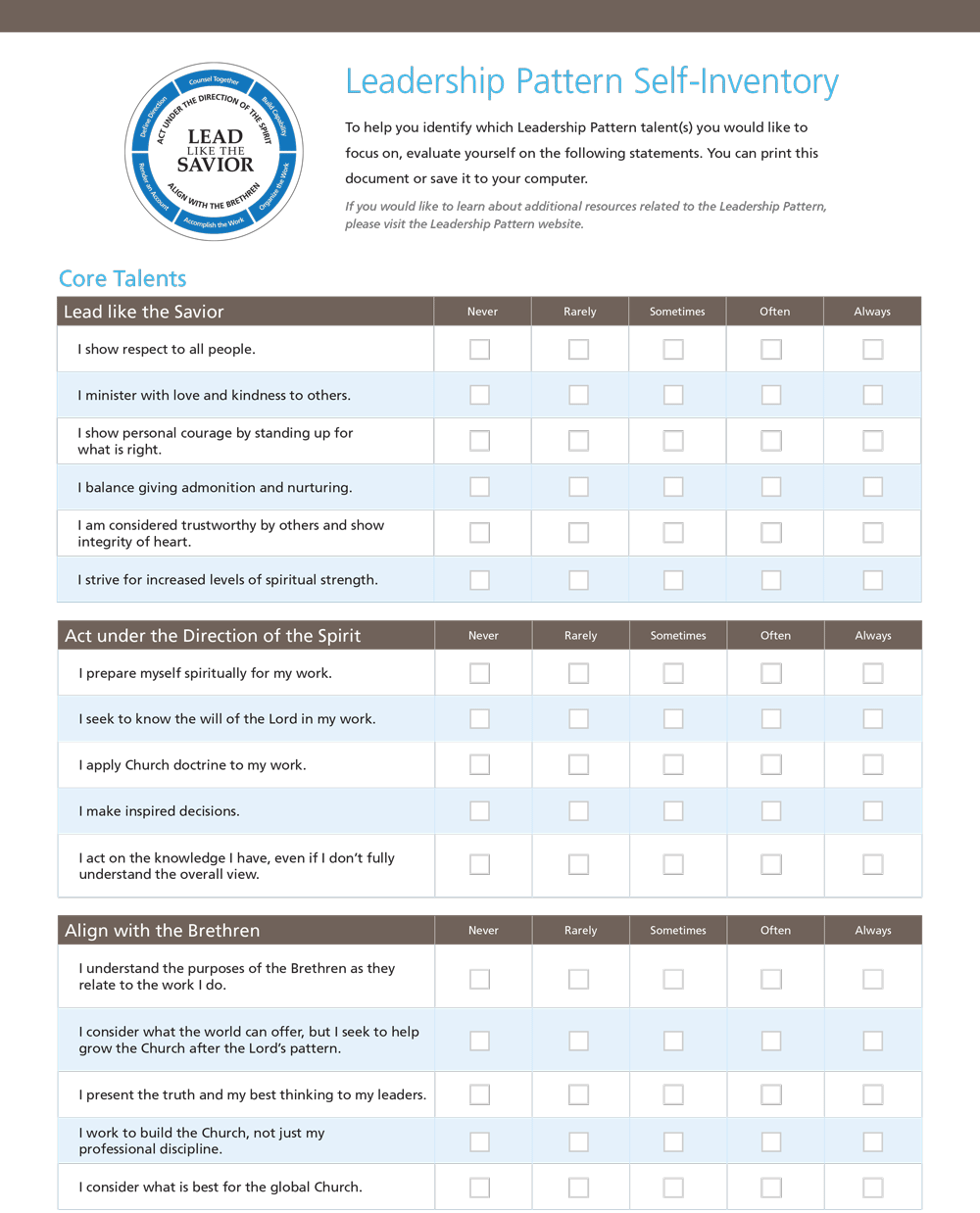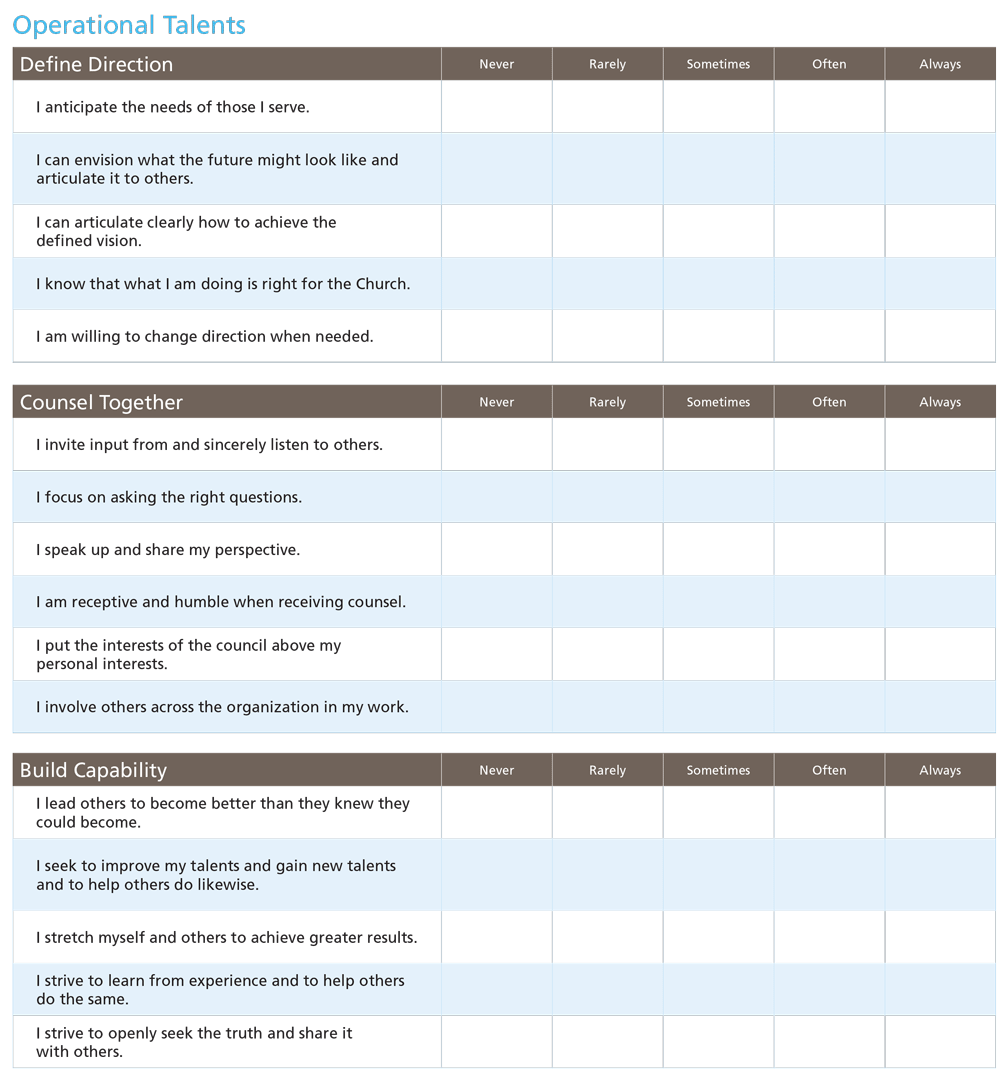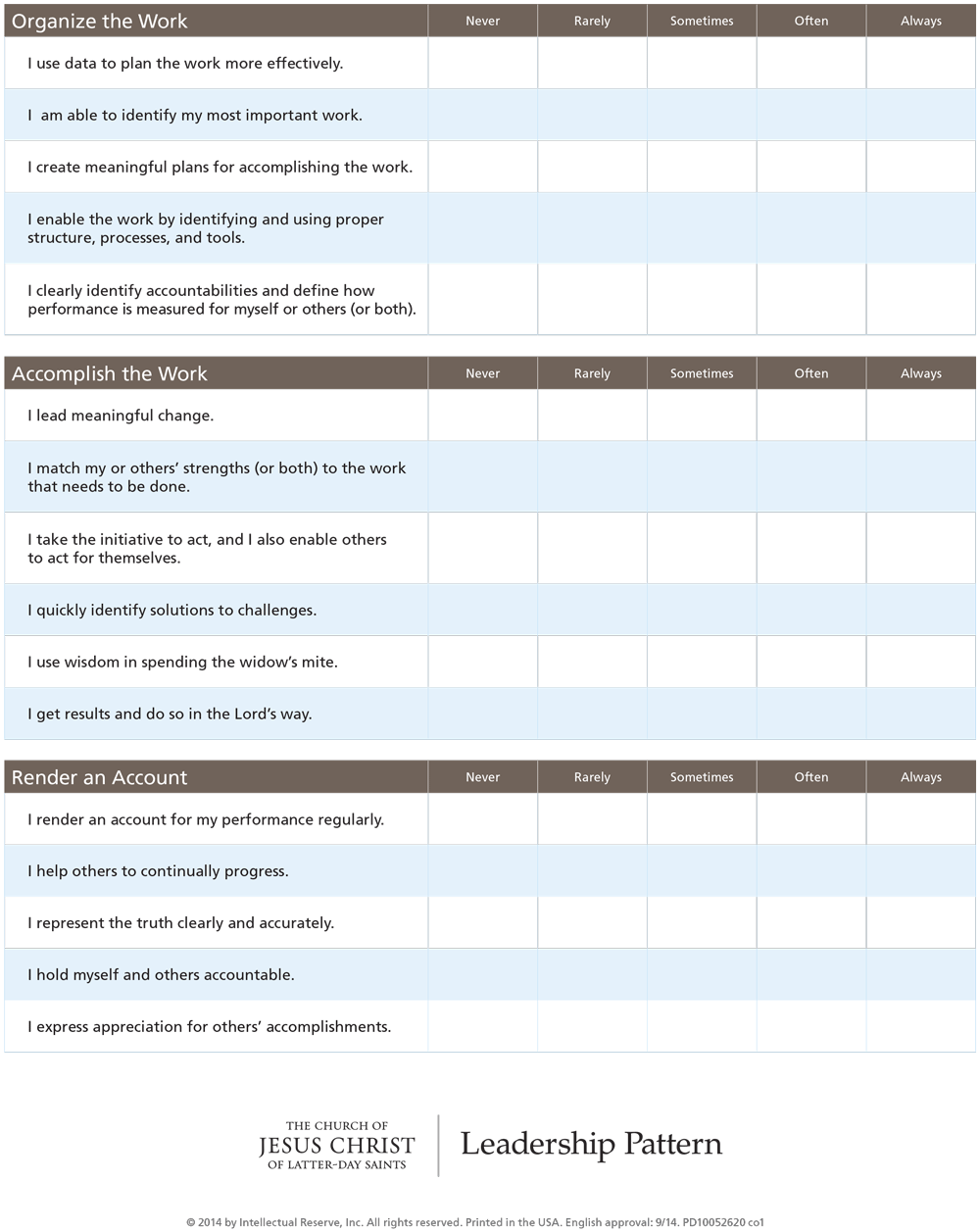Before coming to your training, please do the following:
In this lesson, you will continue to learn about the Leadership Pattern. As you are able to (1) recognize the Leadership Pattern as a tool, (2) use it effectively, and (3) apply it consistently and deliberately, you will develop talents that will bless your life and those around you—including family members, coworkers, and associates.
From the following list, choose and complete one or more activities that best apply to your situation.

Consider this painting of the Savior by Heinrich Hofmann. In your learner’s journal, write a portrait of the Savior describing His moral, intellectual, and spiritual attributes. Instead of drawing what He may look like, focus on writing about His character and qualities you personally admire in Him. Use scriptures, quotes, or your personal experiences, as well as more general impressions or feelings.
As a group, share your portraits of the Savior. Then discuss the following questions:
As part of this discussion, refer to the statement by Marshall McLuhan in the lesson preparation materials: “We shape our tools and then our tools shape us.” Discuss the following questions:
Take a few minutes to ponder the following questions individually. You could write some notes in your learner’s journal.
Identify a tool you regularly use and ponder the following:
Divide into pairs and share with your partner your answers to these questions.
Then review the Leadership Pattern with your partner and read the following description:
“The Leadership Pattern is a framework of 9 talents and 48 accompanying behaviors that helps the Church workforce know how to do the Lord’s work in the Lord’s way. . . . It brings together the best of doctrine, principles, and application—guiding us to a higher level of behavior and performance and helping each of us to become more Christlike” (Leadership Pattern website).
With your partner discuss the following:
Look at the following tools and discuss as a group:
![]()
![]()
![]()
![]()
![]()

Discuss how these tools would help an architect, chef, health care professional, educator, customer service professional, and personal fitness trainer. In your work, you have been given several tools to help you develop and succeed. The Leadership Pattern is key to your development and success. Just as a measuring tape is essential to building and reshaping a house and a measuring cup is essential for a chef’s success, the Leadership Pattern is essential for your work at Deseret Employment. As you seek to apply this tool, it will bless your life and the lives of those around you.
Individually, browse through the Leadership Pattern Self-Inventory found in the “Lesson Resources” section, Resource 1. Then choose three or four talents, and respond to the statements under each one.
Join with the rest of the group and discuss the following:
From the following list, choose and complete one or more activities that best apply to your situation.
Individually, take a moment to read the Your Learning Journey document in the “Lesson Resources" section, Resource 2. After reading it, choose one of the three questions—What lack I yet? What must I do? Therefore, what?—that interests you the most. Divide into three groups, according to which question you chose.
With your group, read the following questions and the scriptures provided. Discuss how these scriptures and the information under Your Learning Journey answer your question.
Divide into pairs and read the Your Learning Journey document found in the “Lesson Resources” section, Resource 2. Then discuss the following questions:
Take a few minutes to review the Leadership Pattern Self-Inventory in the “Lesson Resources” section, Resource 1. Consider what you have read and discussed, and choose three to four talents for a self-evaluation. Then discuss the following with your partner:
Consult the Your Learning Journey document in the “Lesson Resources” section, Resource 2. Then divide into small groups and read the following case studies. Use the information in the Your Learning Journey document to determine in which phase each individual appears to be. Answer the questions accompanying each case study. There may be more than one phase represented in each case study.
Jennifer has been speaking up more in her staff meetings, but she thinks she may be able to contribute more since she has been focused on improving in that area. She wants to use the momentum from her previous goals to keep improving in this area.
This is the third time Rachel has recognized that she has not held her associates accountable enough. She has finally decided to try some new ideas so that she can turn this weakness into more of a strength. Rachel plans to have her associates sign every single development plan, and she has a goal to set up a follow-up schedule with her associates. She believes these changes will help her change her own mindset so that her associates don’t miss any development opportunities.
Tyrone never looks forward to staff meeting. The meetings take him away from his area and leave him playing catch up. He does not contribute much to the meeting, and any notes he writes are unrelated to meeting topics.
From the following list, choose and complete one or more activities that best apply to your situation.
Watch the Mormon Messages for Youth video “A Work in Progress,” (LDS.org) as a class and then discuss the following questions:
The Leadership Pattern website describes the process of personal change as the “constant and deliberate application of Leadership Pattern talents to your work,” which is accomplished by “continually asking and seeking” ways to improve.
As a group, discuss the following questions:
Using your non-dominant hand, write ten times the sentence “I can learn a new skill.” Evaluate your performance each time and think of ways to make your writing clearer.
After writing the sentence ten times, compare the clarity of your sentences with others in the group. Did your writing improve? As a group, discuss the following questions:
Consider the following quotes:
“That which we persist in doing becomes easier for us to do—not that the nature of the thing is changed, but that our power to do is increased” (attributed to Ralph Waldo Emerson, in Teachings of Presidents of the Church: Heber J. Grant [2011], 34).
“Persistence in the pursuit of righteous desires can help us develop talents, attain our spiritual goals, and serve others” (Teachings of Presidents of the Church: Heber J. Grant [2011], 33).
The Leadership Pattern describes the process of personal change as the “constant and deliberate application of Leadership Pattern talents to your work,” which is accomplished by “continually asking and seeking” for ways to improve (Leadership Pattern website).
As a group, discuss the following questions:
Seek to identify a personal or business gap or need.
Spend a few minutes silently pondering what you've discussed during this lesson. Listen as the Holy Ghost helps you identify areas where you can improve. Record your impressions in your learner's journal under the question “What Lack I Yet?”
Seek ways to close the gap or develop the required talent(s) to meet the need.
With the guidance of the Spirit, create your plan of how you will improve and close the gap(s) you have identified. You may use one or more of the exercises below, your own strategy, or a combination of both. Record this plan in your learner's journal under “What Must I Do?”
After a few minutes, those who are comfortable doing so can share their impressions with the group.
Seek understanding, and then share what you learned.
During the week, focus on implementing the plan you created. Record your impressions or lessons learned in your learner's journal under “Therefore, What?” You will be given time at the beginning of next week's lesson to share your experience with the group.


Use this material if you would like to learn more about teaching with the Leadership Pattern.



